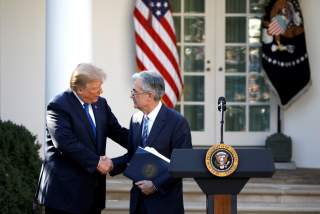How Should The Federal Reserve Respond To The Next Recession? We Have An Answer
Hopefully, when the next economic recession comes along, policymakers will draw a distinction between quantitative easing and helicopter money.
It is unfortunate that just as a serious debate has gotten underway as to how the Federal Reserve should best respond to the next US economic recession, people who should know better fail to draw a distinction between quantitative easing and helicopter money.
A prime example of this failure was provided by Willem Buiter, a distinguished economic professor, in a very recent Financial Times op-ed. Mr. Buiter made the erroneous assertion that the Federal Reserve’s balance sheet expansion from just over 6 percent of GDP in 2008 to over 23 per cent in 2013 was a textbook case of helicopter money.
The truth of the matter is that quantitative easing and helicopter money are totally different monetary policy operations with very different economic consequences.
Over the past decade, quantitative easing has involved the Federal Reserve massively expanding its balance sheet from US$800 billion in 2008 to US$4 ¼ trillion by 2016. The Fed did so by aggressively buying US Treasuries and mortgage-backed securities in the secondary market. The basic purpose of quantitative easing was to stimulate the economy indirectly by reducing long-term interest rates, by encouraging investors to take on more risk, and by generating more buoyant asset markets.
By contrast, helicopter money of the Milton Friedman variety would have involved the Fed directly financing on the most generous of terms the government in order to allow the government to make large cash transfers to the general public with the idea that the public would spend that money.
The Federal Reserve might have engaged in helicopter money by extending to the government a one-time perpetual loan with a zero interest rate that the government would then have transferred to the public. To make that transfer all the more effective in kick–starting the economy, the government might have targeted the helicopter drop to families of modest means who would be most likely to spend that money.
The distinction between quantitative easing and helicopter money is far from semantic. By generating asset price inflation, quantitative easing has seriously distorted US and global credit allocation. By so doing, it all too likely has set us up for another boom-bust cycle. Meanwhile, by exacerbating wealth and income inequality, quantitative easing has provided fuel to our political polarization. It has also caused the Federal Reserve’s balance sheet to balloon by around US$ 3 ½ trillion.
By contrast, helicopter money would not have distorted asset and credit markets and would thereby have allowed us to minimize the risk of another boom-bust cycle. If wisely deployed, it could also have been used to ameliorate income and wealth inequality. A further advantage of helicopter money is that it certainly would not have involved anything like the Federal Reserve balance sheet expansion that took place as a result of quantitative easing.
Hopefully, when the next economic recession comes along, policymakers will draw a distinction between quantitative easing and helicopter money. It also must be hoped that they opt for the latter when trying to kick start the economy. If they do not, we should brace ourselves for yet another boom-bust cycle and yet more political polarization.
This article by Desmond Lachman first appeared at the American Enterprise Institute.
Image: Reuters.

